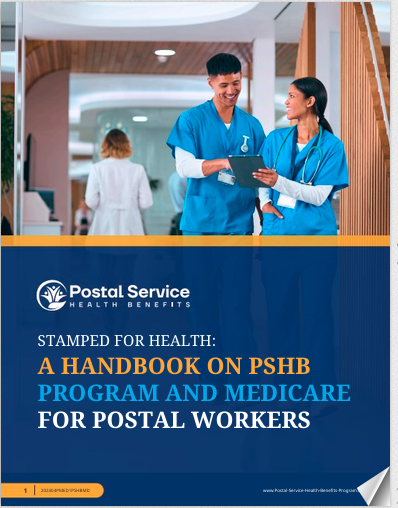Key Takeaways
-
The Postal Service Health Benefits (PSHB) Program introduces improved health coverage for postal workers and retirees in 2025, offering tailored plans to meet unique needs.
-
Understanding enrollment timelines, Medicare integration, and plan features is essential for maximizing your health benefits.
Why 2025 Is a Game-Changer for Postal Workers
If you’re part of the U.S. Postal Service, 2025 marks a significant shift in your health coverage. The Postal Service Health Benefits (PSHB) Program officially replaces the Federal Employees Health Benefits (FEHB) Program for USPS employees, annuitants, and their eligible family members. This change is designed to streamline health coverage and provide more tailored options for postal workers, but understanding the details is crucial to make the most of what’s available.
Key Enrollment Dates You Need to Know
The 2025 Open Season ran from November 11 to December 13, 2024, allowing you to select your PSHB plan for this year. If you missed that window, changes can only be made during a Qualifying Life Event (QLE) or the next Open Season. While your coverage automatically transitioned to a corresponding PSHB plan if you were already enrolled in an FEHB plan, reviewing your options during Open Season each year is a smart move to ensure you’re getting the best fit for your needs.
The Basics of PSHB Plans
The PSHB program offers a variety of plan types, including Self Only, Self Plus One, and Self and Family coverage. The goal is to provide flexibility, whether you’re a single employee or supporting a larger family. Here’s what you can expect from the new system:
-
Coinsurance and Copayments: PSHB plans include standard cost-sharing elements like coinsurance and copayments. These vary depending on the services you use and whether your provider is in-network or out-of-network.
-
Deductibles: Some plans offer low deductibles for routine care, while others provide high-deductible options paired with health savings accounts (HSAs).
-
Out-of-Pocket Maximums: To protect against high medical costs, PSHB plans cap your annual out-of-pocket expenses, which can range from $7,500 for Self Only coverage to $15,000 for Self Plus One and Self and Family coverage.
Coordinating PSHB with Medicare
If you’re a Medicare-eligible annuitant or family member, PSHB plans integrate with Medicare for enhanced benefits. You’re required to enroll in Medicare Part B unless you meet specific exemptions, such as being a retiree on or before January 1, 2025, or turning 64 by that date.
This integration offers several perks:
-
Reduced Out-of-Pocket Costs: Many PSHB plans waive deductibles and lower copayments for those with Medicare Part B.
-
Enhanced Prescription Coverage: Through the Employer Group Waiver Plan (EGWP), PSHB enrollees enjoy comprehensive prescription drug benefits, including a $2,000 annual cap on out-of-pocket prescription costs.
-
Simplified Billing: Your PSHB plan and Medicare work together to streamline payments, reducing the hassle of dealing with multiple bills.
What’s Covered Under PSHB Plans?
PSHB plans provide broad coverage, designed to meet the diverse needs of postal employees and retirees. Key areas include:
Preventive Services
-
Annual check-ups, screenings, and vaccinations are covered at no cost when you use in-network providers.
Specialist and Emergency Care
-
Copayments for specialist visits and urgent or emergency care are standard, but the exact amounts depend on your plan.
Hospital and Surgical Services
-
Inpatient and outpatient procedures are included, with coinsurance rates varying by plan.
Mental Health and Substance Abuse Treatment
-
Coverage includes therapy sessions, inpatient treatment, and counseling services, though the specifics of mental health benefits may vary depending on the chosen PSHB plan.
Dental and Vision Options
-
While dental and vision are not automatically included in all plans, supplemental coverage is widely available through separate programs like FEDVIP.
Understanding Cost Sharing: Deductibles, Coinsurance, and Copayments
One of the most critical aspects of choosing the right PSHB plan is understanding how cost-sharing works. Here’s a quick breakdown:
-
Deductibles: This is the amount you must pay out of pocket before your plan starts covering certain services. For example, a low-deductible plan might require $350 for Self Only coverage, while a high-deductible plan might range from $1,500 to $3,000.
-
Coinsurance: After meeting your deductible, you’ll share a percentage of the costs for services—typically 10% to 30% for in-network care.
-
Copayments: Fixed dollar amounts for specific services, such as $20 for a primary care visit or $100 for emergency room care.
Special Considerations for Postal Retirees
If you’re retired, the PSHB program continues to support your healthcare needs, but there are a few key points to consider:
-
Premiums and Contributions: As a retiree, you’ll continue to pay premiums for your PSHB plan. The federal government covers approximately 70% of the total cost, leaving you responsible for the remaining portion.
-
Medicare Enrollment: Make sure you enroll in Medicare Part B to avoid losing access to certain PSHB benefits. The integration ensures you receive comprehensive care while minimizing out-of-pocket expenses.
-
Prescription Drug Benefits: Retirees benefit significantly from the EGWP’s enhanced prescription coverage, which eliminates the donut hole and caps costs at $2,000 annually.
What If You Missed Open Season?
Missing Open Season doesn’t mean you’re entirely out of options. If you experience a Qualifying Life Event (QLE), such as marriage, divorce, birth of a child, or a change in employment status, you may be eligible to enroll or make changes to your plan outside the standard enrollment period. Keep in mind that you must act quickly, as QLE windows are time-sensitive.
Tips for Choosing the Right Plan
Navigating your health plan options doesn’t have to be overwhelming. Here are a few tips to help you decide:
-
Assess Your Needs: Consider your current health, family size, and anticipated medical expenses. Are you managing chronic conditions, or do you need frequent specialist care?
-
Compare Coverage: Review plan brochures carefully to understand what’s included. Look for specifics on deductibles, copayments, and coinsurance.
-
In-Network vs. Out-of-Network Costs: Using in-network providers saves money. Verify that your preferred doctors and hospitals are part of the network.
-
Account for Prescription Costs: If you take regular medications, check the formulary to ensure your prescriptions are covered and understand your out-of-pocket responsibilities.
-
Evaluate Supplemental Coverage: If dental or vision benefits are essential, explore additional plans like FEDVIP.
What to Expect Moving Forward
The introduction of the PSHB program is a big step toward modernizing healthcare for postal workers and retirees. While the transition may feel like a lot to process, the changes are designed to provide more tailored and efficient health coverage. Make sure to stay informed, review your options annually, and take full advantage of the benefits available to you.
Make the Most of Your PSHB Benefits
Navigating your health coverage options doesn’t have to be complicated. By understanding the basics of the PSHB program, coordinating your benefits with Medicare, and carefully selecting the right plan, you can ensure your healthcare needs are met now and in the future. Take charge of your health today and explore the options that work best for you.






